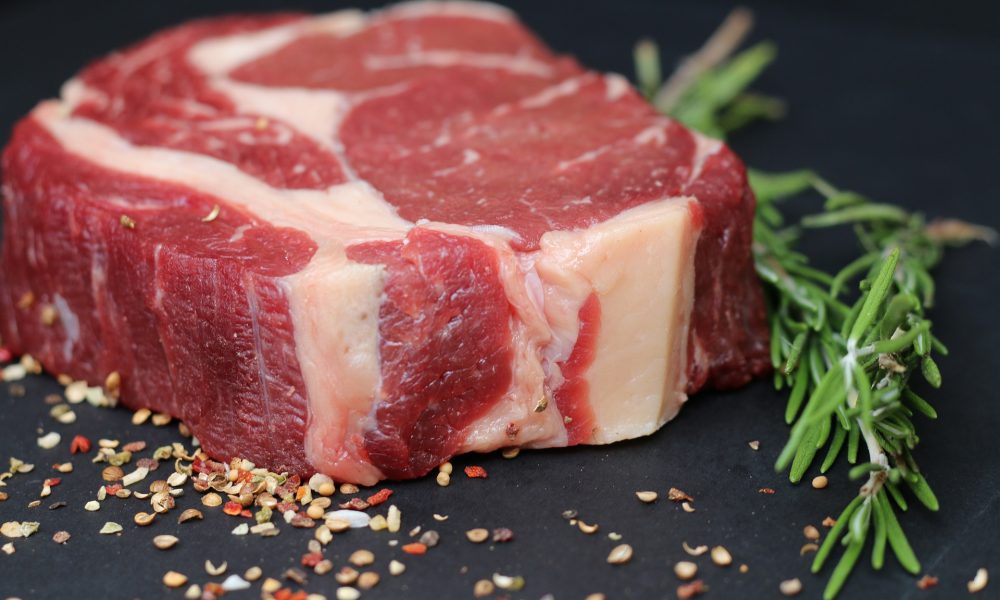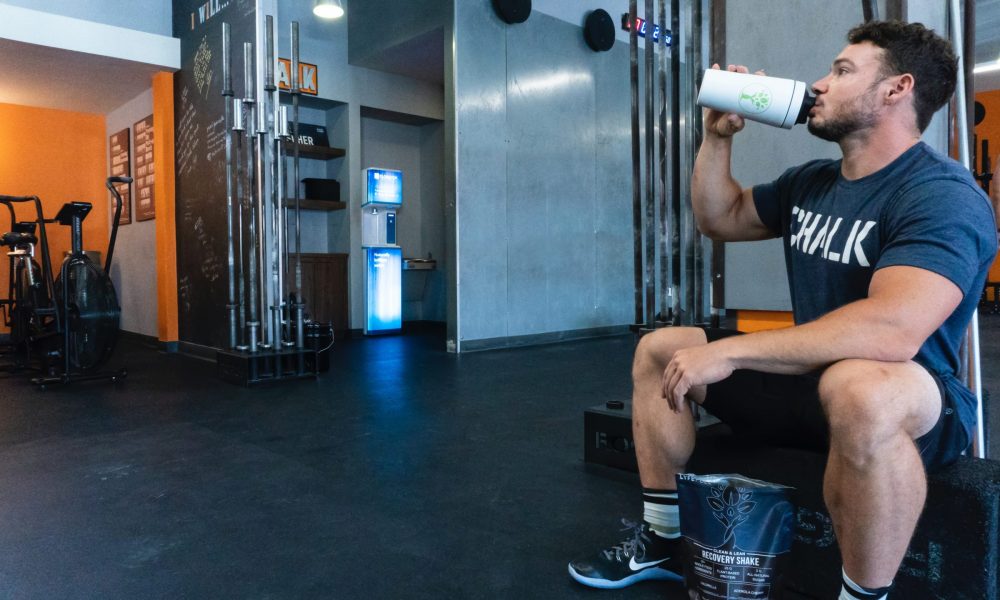
Is Gluten Even That Bad?
Is Gluten Even That Bad? If you ask the average person about bread, they’ll tell you it’s deathly bad for you. It’s the carb that

We know protein is epically wonderful for keeping us full and growing us sexier slabs of muscle, but how many times a day should we eat it? Is there really an optimal frequency for protein intake to maximize muscle mass?
Let’s find out, but before we do, I wanted to remind everyone that if there is a benefit to protein frequency, it pales in comparison to the benefit of eating enough total protein (2). Getting enough protein daily has consistently been shown to be far more important than how you distribute it.
How much protein can your body even digest and absorb in one sitting? This is a commonly misunderstood concept thanks to internet bros who continue to say things like your body can only use 30 grams of protein and the rest gets pooped out, blah, blah, blah.
This is not true and anyone that tells you this is more full of crap than a constipated pig at buffet bathroom.
You see, your body absorbs pretty much all the protein you eat, not always all at once, but it eventually absorbs and digests nearly every bioavailable gram you eat (1).
Of the protein absorbed, about 50% is stored temporarily in organs like the liver and stomach. 10% of is used to build muscle. And the remaining 40% is used to build things like neurotransmitters or gets burned off or stored as fat.
The common misconception about how much protein you can absorb in one sitting is often confused with how much protein your body can use to build muscle in one sitting. That’s where things get interesting.
As I mentioned, your body will use about 10% to build muscle through the process called muscle protein synthesis (MPS), but this doesn’t mean it can use an unlimited amount. The maximum amount is around 20-40 grams per sitting (3).
So if my body can only use 20-40 grams per sitting, wouldn’t it make sense to just to like, you know, take a scoop of protein powder every hour to get as jacked as the incredible hulk?
Unfortunately no.
Studies show after MPS has been maximally stimulated in one sitting, having additional protein doesn’t spike it higher (4). This is known as the muscle full effect or the refractory period where MPS can’t be stimulated for at least another 2 hours.
In one study, researchers tested 80 grams of protein distributed in 3 different conditions, 8 servings, 4 servings, and 2 servings (5). The 4 serving group displayed the greatest effect on MPS which lines up well with what we know about the muscle full effect.
About 4 feedings of sufficient protein per day seems to be most optimal within the average 16 hours you’re awake. This is called protein-spread theory and if it’s true, it should result in more muscle with 4 feedings compared to smaller numbers.
However, protein-spread theory is quite controversial because when you look at research that measures actual muscle size instead of just MPS, the theory doesn’t hold up too strong.
Fat loss studies for example show during a caloric deficit, muscle is retained to the same degree regardless how often protein is consumed.
With intermittent fasting for example where people eat in a very small eating window (usually 8 hours) can’t possibly maximize on protein spread theory. However as the controlled research shows, they still retain muscle just as well as people who eat more frequent meals even when both groups strength train (6,7,8).
Another study looking at young women who ate at maintenance showed the same thing (9). Retention of muscle was the same despite one group spreading their protein intake more evenly.
To top it off, this systematic review comparing protein supplements taken with 3 meals compared to protein supplements taken between 3 meals showed no difference in muscle mass (10).

These controlled studies are usually done in conditions of maintenance or a deficit. When gym rats like you and I want to build a lot of muscle, we go into a caloric surplus which unfortunately we just don’t have any controlled research on.
One study done in Rugby players who strength trained, showed no difference in muscle gained with different protein distribution (12). However, this study compared 4 to 6 protein feedings which doesn’t do much for us because theoretically 4 and 6 feedings would already take full advantage of protein-spread theory.
A better study by Yasuda et al compared 3 evenly spread protein feedings to 3 skewed protein feedings found the evenly spread group grew more muscle and lost more fat during a caloric surplus (15). They even had the participants strength train 3x per week.
The skewed group essentially ate 2 big doses of protein with 1 extremely minor dose, so really this study compared 3 vs 2 doses.
Then another tightly controlled Japanese study compared 3 vs 6 meals in trained rowers eating in a hefty surplus (19). Both groups gained the same muscle.
So we can start to see that protein distribution doesn’t matter in a deficit, but it plays out pretty well in a surplus because building muscle is more demanding than simply retaining muscle.
During a surplus, 2 protein feedings seems to be suboptimal, 3 seems to be optimal, but 4 seems to be safest bet without any additional benefits passed that (11,18).
We know with great certainty MPS peaks after about 40 grams of protein is absorbed and the muscle full effect is real. We also know that you need a minimum amount of amino acids to effectively stimulate muscle growth (16), so theoretically, distributing protein intake between 4 meals seems more optimal, but why do some studies fail to show this?
A few reasons can explain this
Even though the muscle building process of muscle protein synthesis has a limit per meal, additional protein within a meal can still make you gain more muscle making protein distribution irrelevant.
How is this possible?
I’m glad you asked. It’s pretty simple actually. How much muscle you gain is determined by the net balance of muscle protein synthesis and muscle protein breakdown. Many researchers study muscle protein synthesis, but not muscle protein breakdown (MPB) because MPB is more difficult to measure.

You can still gain the same amount of muscle without distributing your protein intake because the additional protein consumed past the MPS threshold will go towards preventing MPB thus still giving you additional gains.
This is displayed in research showing no upper limit of protein per meal as more protein in a meal still correlates with more muscle (13,18).
If you’re still a bit confused, no worries. Think about it like this. If you wanted to have as much money as possible, you would need to make as much money as possible while spending as little as possible.
You can only make so much money per day from your job, but you can still end up with more money by focusing your efforts on spending less each day.
Same thing with your body. You can still end up with more muscle even though your body is limited on how much can be built per meal. The extra protein will simply go towards lowering the amount of muscle breakdown giving you a better net muscle protein balance (14). This is likely the main reason why distributing protein is great in theory, but isn’t always necessary in practice.
Another possible cause of why spreading your protein across 4 meals is unnecessary is because the research design is too different from real world practice.
For example, most of these studies feed people whey protein per meal which is a fast absorbing protein. When we eat in everyday life, we’re eating mixed meals with whole foods containing both fast and slow absorbing protein on top of other macronutrients like carbs/fat.
This greatly slows digestion down and potentially provides amino acids to enter the bloodstream the whole day even with less frequent feedings.
We also see that in overweight/obese individuals, protein distribution doesn’t matter (17).
So as you get leaner and more advanced in your training journey, the difference in protein distribution will matter more and more. A good reminder that minor aspects like protein frequency may not be so insignificant when progress becomes more difficult as an advanced lifter.
If you had to distribute protein intake across 4 meals at a maximum of 20-40 grams of protein per meal, you’d only need to eat 80-160 grams of protein per day.
But total protein studies also throw a big wrench in this theory because they consistently show to maximize muscle growth, the average person will need more than 80-160 grams per day (2).
Here are the practical applications on how often you should eat protein.
S;, Yasuda J;Tomita T;Arimitsu T;Fujita. “Evenly Distributed Protein Intake Over 3 Meals Augments Resistance Exercise-Induced Muscle Hypertrophy in Healthy Young Men.” The Journal of Nutrition, U.S. National Library of Medicine, pubmed.ncbi.nlm.nih.gov/32321161/.
Areta JL;Hawley JA;Ye JM;Chan MH;Coffey VG; “Increasing Leucine Concentration Stimulates Mechanistic Target of Rapamycin Signaling and Cell Growth in C2C12 Skeletal Muscle Cells.” Nutrition Research (New York, N.Y.), U.S. National Library of Medicine, pubmed.ncbi.nlm.nih.gov/25439029/.
Lombardo M;Bellia C;Aulisa G;Pratesi A;Perrone MA;Padua E;Iellamo F;Caprio M;Bellia A; “The Different Daily Distribution of Proteins Does Not Influence the Variations in Body Composition in a Sample of Subjects Undergoing a Low-Calorie Mediterranean-Type Diet.” Minerva Gastroenterologica e Dietologica, U.S. National Library of Medicine, pubmed.ncbi.nlm.nih.gov/32218430/.
Taguchi, Motoko, et al. “Increasing Meal Frequency in Isoenergetic Conditions Does Not Affect Body Composition Change and Appetite During Weight Gain in Japanese Athletes.” Human Kinetics, Human Kinetics, 25 Dec. 2020, journals.humankinetics.com/view/journals/ijsnem/31/2/article-p109.xml.
Sign up for AwesomeFitnessScience Weekly. You’ll get juicy insider secrets, updates, and stories.

Is Gluten Even That Bad? If you ask the average person about bread, they’ll tell you it’s deathly bad for you. It’s the carb that

Weights vs machines is a face palm worthy debate, especially when you see dorks claim free weights are better and manlier.

You ready to go from a mere peasant who can’t stop eating to a satiated almighty weight loss emperor?